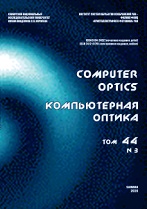|
This article is cited in 1 scientific paper (total in 1 paper)
IMAGE PROCESSING, PATTERN RECOGNITION
Generation and study of the synthetic brain electron microscopy dataset for segmentation purpose
N. A. Sokolov, E. P. Vasiliev, A. A. Getmanskaya
Department of Mathematical Software and Supercomputing Technologies, Lobachevsky University, 603950, Nizhny Novgorod, Russia, Gagarina st. 23
Abstract:
Advanced microscopy technologies such as electron microscopy have opened up a new field of vision for biomedical researchers. The use of artificial intelligence methods for processing EM data is largely difficult due to the small amount of annotated data at the training stage. Therefore, we add synthetic images to an annotated real EM dataset or use a fully synthetic training dataset. In this work, we present an algorithm for the synthesis of 6 types of organelles. Based on the EPFL dataset, a training set of 1161 real fragments 256$\times$256 (ORG) and 2000 synthetic ones (SYN), as well as their combination (MIX), were generated. The experiment of training models for 6, 5-classes and binary segmentation showed that, despite the imperfections of synthetics, training on a mixed (MIX) dataset gave a significant increase (about 0.1) in the Dice metric for 6 and 5 and same results at binary. The synthetic data strategy gives annotations for free, but shifts the effort to producing sufficiently realistic images.
Keywords:
multi-class segmentation, electron microscopy, neural network, image segmentation, machine learning
Received: 09.01.2023
Accepted: 23.05.2023
Citation:
N. A. Sokolov, E. P. Vasiliev, A. A. Getmanskaya, “Generation and study of the synthetic brain electron microscopy dataset for segmentation purpose”, Computer Optics, 47:5 (2023), 778–787
Linking options:
https://www.mathnet.ru/eng/co1186 https://www.mathnet.ru/eng/co/v47/i5/p778
|

| Statistics & downloads: |
| Abstract page: | 19 | | Full-text PDF : | 14 | | References: | 6 |
|




 Contact us:
Contact us: Terms of Use
Terms of Use
 Registration to the website
Registration to the website Logotypes
Logotypes








 Citation in format
Citation in format 
